Polyvinyl chloride (PVC), a versatile and cost-effective plastic material, holds a vital position in modern manufacturing. From plumbing projects to medical devices, PVC’s versatility and plasticity make it an ideal choice for injection molding and plastics manufacturing.
As a company specializing in injection molding and plastics manufacturing, we understand how to utilize different types of PVC to meet diverse customer needs.
This article, focusing on the keyword “Types of PVC,” will delve into the various types of PVC and their unique advantages in industrial applications. This article aims to provide professional insights for international trade customers and showcase our expertise in manufacturing high-quality PVC products.
What Is PolyVinyl Chloride?
PVC stands for polyvinyl chloride, is an amorphous polymer that contains a small amount of crystalline structure, created by replacing a hydrogen atom in polyethylene with a chlorine atom.
In its pure form, PVC is just a white powder, meaning it is merely a polymer resin and cannot be used for direct product manufacturing.
Therefore, in practical applications, it is usually necessary to add various additives (such as stabilizers, lubricants, fillers, flame retardants, etc.) to enhance the performance of PVC, enabling it to meet specific industrial needs.
Today, PVC has become one of the most widely used types of plastic in various application fields.
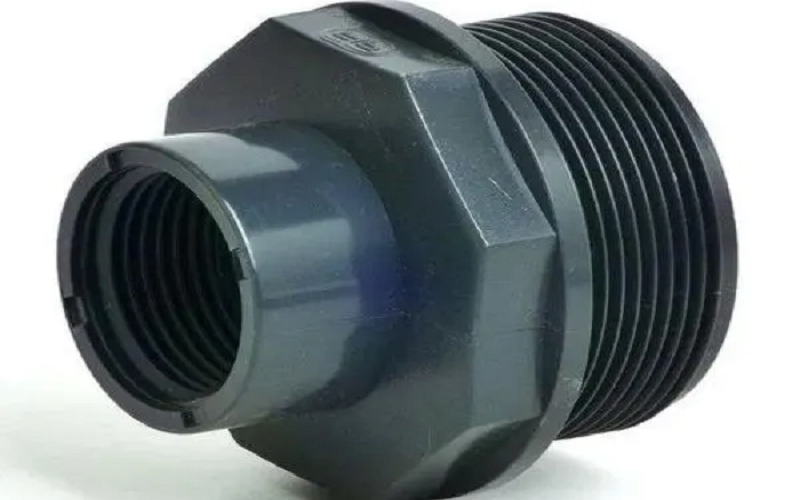
Basic Properties Of PVC Material
Polyvinyl Chloride (PVC) is a widely used thermoplastic, highly favored in injection molding and plastic manufacturing for its exceptional performance.
The general properties of PVC include corrosion resistance, chemical resistance, cost-effectiveness, and excellent plasticity, enabling it to meet diverse industrial environments and application needs.
By incorporating various additives such as plasticizers, stabilizers , and other modifiers, PVC can be transformed into rigid, flexible, or foam variants to suit the diverse requirements of injection molding processes.
These additives not only enhance PVC’s physical properties but also allow it to precisely meet the functional demands of specific products.
In PVC injection molding, the material demonstrates significant advantages: ease of molding, enabling efficient production of complex-shaped parts through injection techniques; lightweight, reducing product weight and transportation costs; and durability, ensuring performance stability over long-term use.
These characteristics make PVC an ideal choice for manufacturing automotive components , piping systems , and packaging materials .
With its versatility and cost-effectiveness, PVC offers endless possibilities for our injection molding production while providing high-quality, customized solutions for our international trade customers.
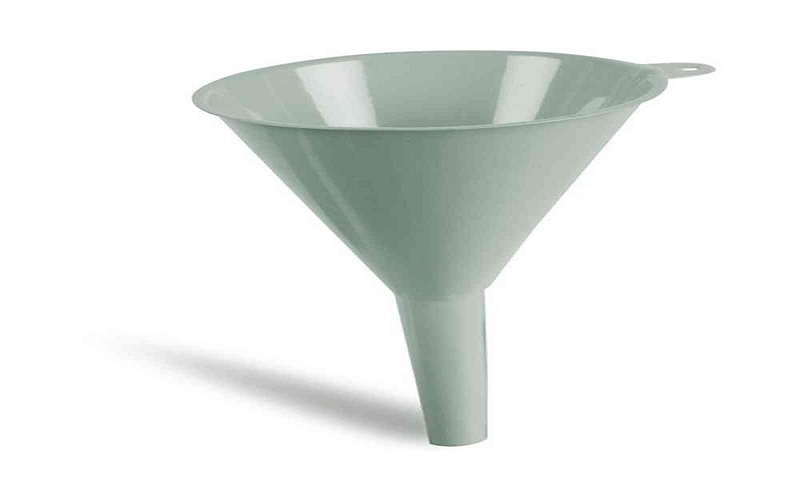
Main Types Of PVC
Based on the amount of plasticizer content, PVC plastics are commonly divided into two major types: rigid PVC and flexible PVC.
Rigid PVC
Rigid PVC refers to PVC plastics that contain no or very little plasticizer (less than 10%); those without any plasticizer are known as PVC-U, where PVC-U stands for unplasticized polyvinyl chloride.
Rigid polyvinyl chloride has good mechanical strength, weather resistance, and flame resistance, and can be used alone as a structural material.
It is applied in the chemical industry for manufacturing pipes, sheets, and injection-molded products. PVC-U pipes are widely used for water transportation and drainage systems due to their rigidity, durability, and recyclability.
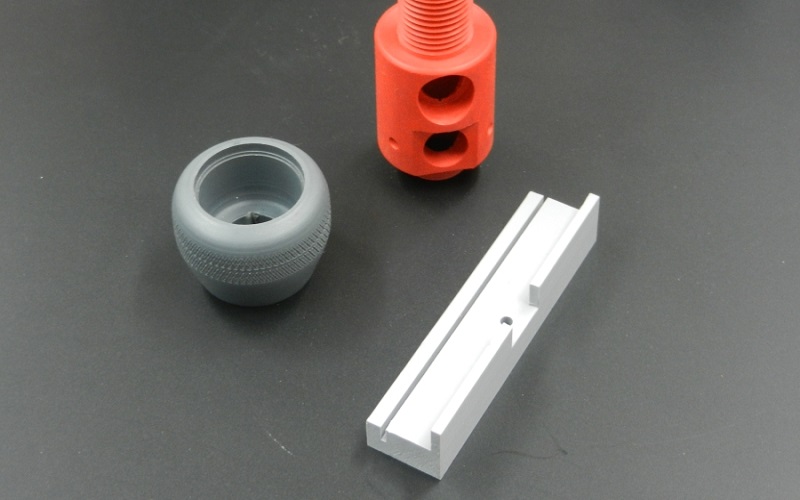
Flexible PVC
Flexible PVC is produced by adding 30-70% plasticizer to PVC resin along with a certain amount of stabilizers and other additives.
Flexible PVC is characterized by its flexibility and transparency, having good elasticity and cold resistance.
However, compared to rigid PVC, it has lower strength, is prone to brittleness, and does not preserve well over long periods.Common uses of flexible PVC include production of flooring, ceilings, and leather surfaces.
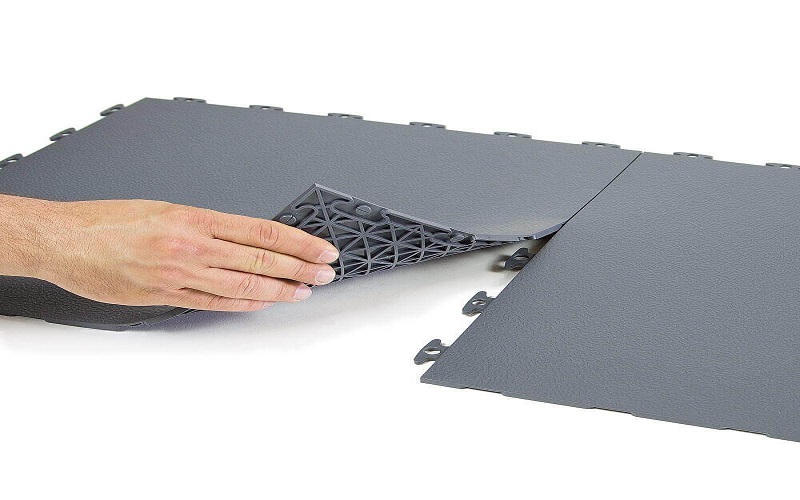
Type | Rigid PVC | Flexible PVC |
Advantage | High mechanical strength, good weather and chemical resistance, durable | chemical resistance, durable High flexibility, good elasticity, adaptable to complex shapes |
Disadvantage | Less flexible, can be brittle in cold environments | Lower mechanical strength, can degrade with excessive use of plasticizers |
Application | Piping systems, window frames, building and construction materials | Electrical cable insulation, flooring, medical tubing, automotive interiors |
Chlorinated PVC (C PVC)
Chlorinated PVC, also known as CPVC, is a product of further chlorination of PVC resin, with the resultant CPVC resin having a chlorine mass fraction of 65% to 72%.
The increased chlorine content significantly improves the material’s heat resistance, aging resistance, corrosion resistance, and chemical stability.C-PVC is commonly used in residential and commercial construction.
Compared to other PVC types, CPVC can withstand higher temperatures and is suitable for a wider range of plumbing and industrial applications.
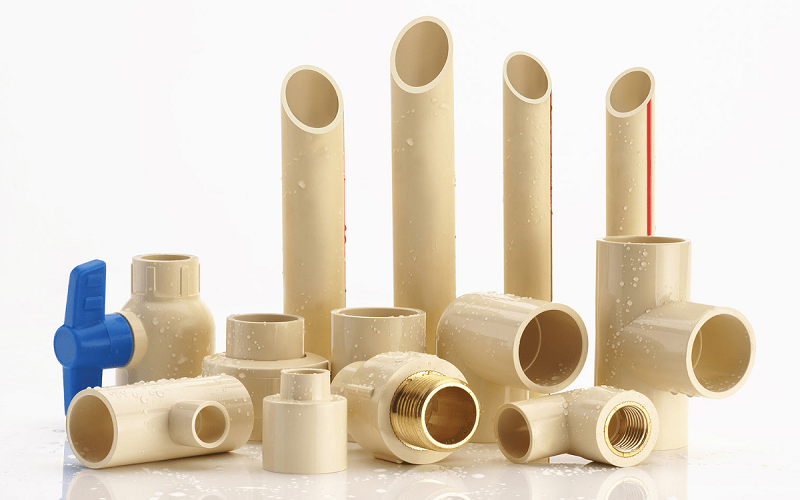
PVC-O
PVC-O, also known as Biaxially Oriented Polyvinyl Chloride, undergoes axial stretching or radial stretching to align its molecular chains more orderly, thereby significantly enhancing the material’s strength and pressure resistance.
PVC-O pipes are widely used in pressure piping systems for potable water, irrigation, and sewer pumping mains due to their high durability, resistance to cracking, and excellent pressure rating.
Their layered structure provides superior hydraulic capacity and flexibility compared to regular PVC pipes, making them ideal for high pressure applications and long lifespan installations.
PVC-M
PVC-M, or Modified Polyvinyl Chloride, is enhanced with modifiers like acrylic and styrene-butadiene rubber to boost impact resistance and toughness.
Ideal for water supply, irrigation, and industrial piping, PVC-M balances strength and flexibility, resisting mechanical stress while maintaining durability.
Lightweight and easy to install, PVC-M is a cost-effective, low-maintenance solution for reliable piping systems.
PVC-HI (High Impact PVC)
PVC-HI, or High Impact PVC, is engineered with impact modifiers to enhance toughness and durability, making it ideal for demanding industrial applications.
These pipes excel in environments with frequent impacts, vibrations, or high pressure, such as chemical processing and industrial systems.
Available in thicker-walled Schedule 80 for high-pressure needs or cost-effective Schedule 40, PVC-HI pipes offer excellent corrosion resistance and durability, reducing maintenance and ensuring reliable performance in harsh conditions.
PVC-A (Alloy/Modified PVC)
PVC-A, or Alloy/Modified PVC, is enhanced with additives like plasticizers or fillers to improve flexibility, strength, and durability. It’s widely used in medical tubing, window/door frames, and potable water systems due to its biocompatibility, corrosion resistance, and longevity.
Available in various sizes and schedules (e.g., Schedule 40 and 80), PVC-A pipes provide a cost-effective, durable solution for diverse applications, minimizing maintenance and ensuring long-term reliability.
What Type Of PVC Is Used?
The type of PVC used depends largely on the specific application and required properties.
For instance, PVC-U (unplasticized PVC) or rigid PVC is commonly employed in piping systems for potable water, drainage, and sewage due to its high chemical resistance, durability, and cost-effectiveness. Its non-corrosive nature makes it ideal for transporting chemicals and drinking water safely.
Chlorinated PVC (C-PVC) is preferred in applications requiring higher temperature resistance, such as hot water plumbing and industrial processes, thanks to its wider temperature tolerance and excellent corrosion resistance.
PVC-O (oriented PVC) is often selected for pressure piping systems, including sewer pumping mains and irrigation, due to its enhanced strength, flexibility, and resistance to cracking, making it suitable for high-pressure applications.
Modified PVC types like PVC-M and PVC-HI (high impact PVC) are designed to withstand external blows and mechanical stresses, making them suitable for industrial environments where durability under impact is critical, such as chemical processing plants or natural gas distribution.
Flexible PVC, on the other hand, is commonly used for applications requiring elasticity, such as medical tubing or electrical conduit, where flexibility and durability are essential.
Additionally, specialized PVC types like PVC-A (amorphous structure PVC) are used in applications requiring clarity and flexibility, including window frames and certain medical devices.
Selecting the appropriate PVC type involves considering factors such as wall thickness (pipe schedule), pressure rating, chemical resistance, and environmental conditions like exposure to UV light. Proper installation techniques, including the use of solvent cement and accurate measurements with a tape measure, ensure the longevity and performance of PVC piping systems.
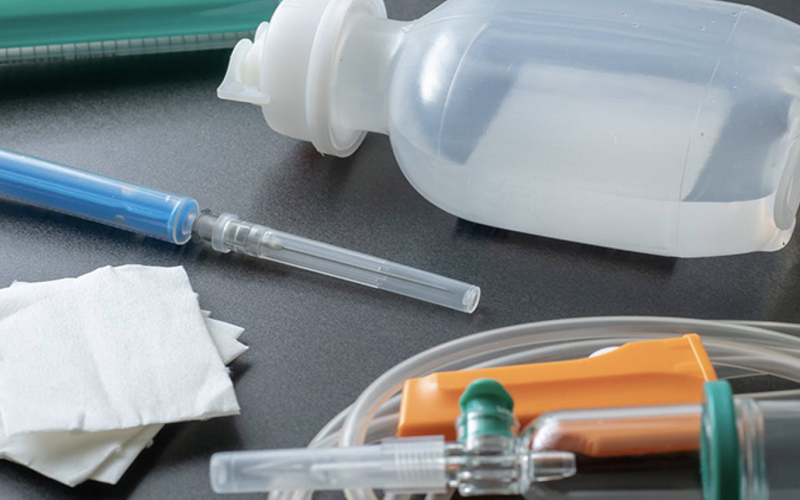
Specifications Of PVC Pipes
PVC pipes are produced in various pipe schedules, such as Schedule 40 and Schedule 80, to schedule the wall thickness and pressure rating required for different uses.
Schedule 80 pipes are typically dark gray, while Schedule 40 pipes are usually white, indicating differences in wall thickness and pressure handling.
The maximum operating temperature of Schedule 40 PVC pipes makes them suitable for low-pressure, moderate-temperature uses such as drainage and irrigation.
PVC pipe sizes are determined by their inside diameter, which is crucial for ensuring proper flow capacity in piping systems.
Selecting Manufacturing Processes For Different PVC Types
The choice of manufacturing process for Polyvinyl Chloride (PVC) depends on the specific type of PVC and its intended application.
Different PVC variants, such as rigid, flexible, or modified PVC, require tailored processing methods like calendering, extrusion, or injection molding to optimize their properties and performance.
Extrusion Molding
Extrusion molding is one of the most common methods used to process PVC, suitable for producing pipes, sheets, and films. Extrusion molding is commonly used to produce PVC pipes for drainage and cold water systems, with Schedule 40 being the most common type for these applications.
PVC piping produced by extrusion offers high resistance to corrosion and chemicals, making it ideal for new PVC pipes in water supply and drainage systems.
Injection Molding
PVC injection molding is a common processing technique ideal for producing complex-shaped products such as fittings, including couplings that join two pipes and double tee fittings that connect four pipes, as well as valves and containers. A fitting’s end is designed to match the pipe’s outside diameter, ensuring a secure and space-saving connection.
Calendering Molding
PVC plastic is heated and pressed to the required thickness and width through a calendering machine, used for producing PVC films, sheets, and flooring materials.
Since PVC is a thermosensitive material, it releases corrosive gases such as hydrogen chloride when melted, which can damage mechanical equipment.
Therefore, the molds and equipment used in the processing must be made from corrosion-resistant materials.
Molding conditions for different types of PVC | ||
Rigid PVC | Flexible PVC | |
Drying temperatures | 80 ℃×2 h | |
Mould temperature | 40-60 ℃ | |
Tube temperature | 160-190 ℃ | 140-170 ℃ |
Injection pressure | 700-1500 kg/cm2 | 600-1500 kg/cm2 |
Forming shrinkage | 0.1-0.5% | 1.2-2.0% |
Environmental Impact And Recycling Of PVC Material
PVC material has become an important plastic due to its unique properties and wide applications. However, its negative impact on the environment cannot be ignored.
Firstly, the production process of PVC generates some organic vapor emissions and wastewater, which contribute to environmental pollution to a certain extent.
Additionally, the production of PVC requires substantial energy consumption, which also imposes a significant environmental load.
Secondly, the use of PVC typically involves adding various plastic additives, some of which may contain substances harmful to human health and the environment, such as phthalates.
These substances can gradually release into the environment during the use of PVC materials, potentially causing environmental pollution and harm.
Furthermore, due to the special nature of the material, recycling PVC is not as simple as other plastics. Recycled PVC can be processed multiple times without significant loss of quality, contributing to environmental conservation and supporting public health by reducing pollution.
If products containing PVC are disposed of carelessly or incinerated, they may release toxic gases, posing risks to environmental and human health.
Therefore, in recent years, plastic manufacturers have been dedicated to developing bio-based PVC and biodegradable PVC to reduce the environmental impact of traditional PVC.
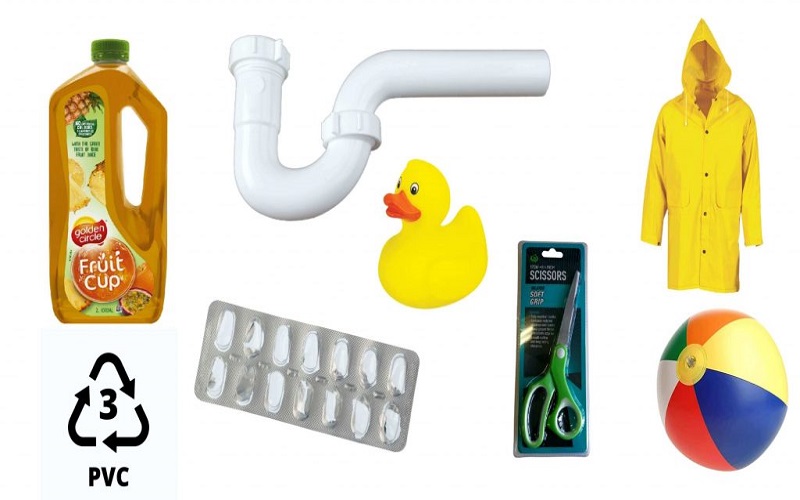
Is PVC Toxic?
The question of whether PVC is toxic is a topic of ongoing discussion. As a material, finished PVC is generally safe when properly manufactured and used.
Vinyl chloride, the monomer used to produce PVC, poses potential health risks and is strictly regulated, but these risks are mitigated in properly processed PVC products.
PVC-U pipes and fittings, for example, offer many benefits, including safety for transporting drinking water, lightweight handling, and affordability.
However, vinyl gloves made from PVC show poor resistance to many chemicals, such as glutaraldehyde-based products and alcohols used in disinfectants or hand sanitizers, limiting their suitability for certain applications.
Safety concerns with PVC primarily arise from certain additives used in its production and from toxic substances released during incineration. For instance, flexible PVC often contains plasticizers like phthalates, which may act as endocrine disruptors, potentially impacting the development of children and pregnant women.
Additionally, burning PVC can release harmful substances, including hydrogen chloride gas and dioxins, which pose risks to both human health, particularly the respiratory system, and the environment.
To address these concerns, many manufacturers and regulatory bodies are taking steps to enhance PVC safety. These efforts include limiting the use of harmful plasticizers, developing plasticizer-free PVC products, and promoting safer disposal methods to minimize environmental and health risks.
By adhering to strict manufacturing standards and regulations, the industry continues to ensure that PVC remains a reliable and safe material for a wide range of applications.
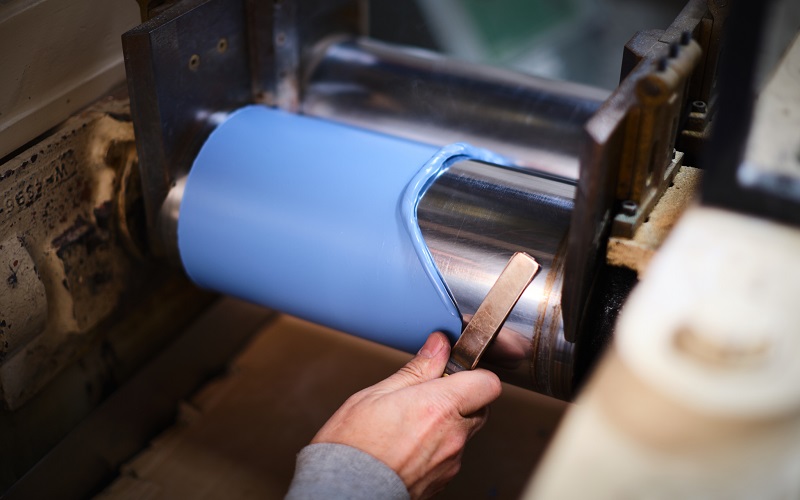
Conclusion
In summary, understanding the various types of PVC is crucial for selecting the right material for a specific application.
From rigid PVC, commonly used in drinking water and drainage systems, to specialized types like high-temperature-resistant chlorinated PVC (C-PVC) and the stronger, more flexible PVC-O, each type offers its own advantages.
Additionally, modified materials like PVC-M and PVC-HI offer increased toughness and durability for demanding industrial applications. PVC remains a versatile and reliable choice across numerous industries, thanks to its chemical resistance, cost-effectiveness, and recyclability.
Properly selecting and applying the right PVC type ensures the long-lasting performance, safety, and environmental sustainability of your project.
